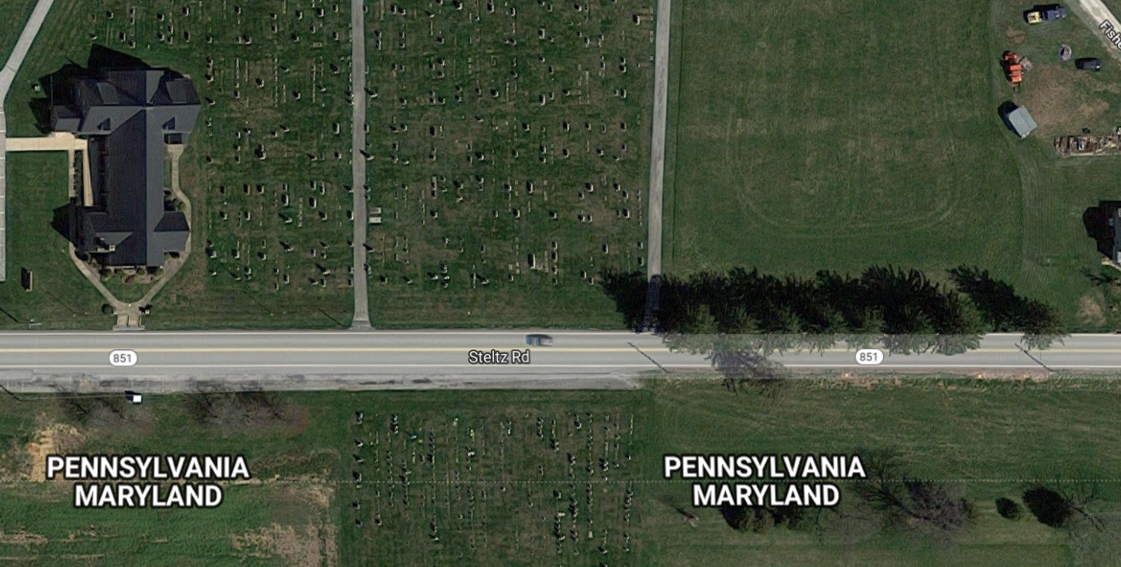
A week ago, I was off to a Presbytery meeting where, among other things, LPC’s own Casey Huckel was examined and received by the Presbytery as a candidate for ordained pastoral ministry. Of course, Casey’s examination and reception were the highlight of the meeting for our LPC delegation, but not the only highlight. Yes, we are Presbyterians and sometimes it seems we are just a bit taken with our “decently and in order” ways. But debating procedural minutiae or hearing reports of God’s astounding work in the mission field, there was a good spirit and strong hope in our meeting together.
I like this Presbytery of the East.
We met at the Bethlehem Stetz Reformed Church, EPC, mailing address in Glen Rock, PA. The church’s website says, “Just four miles west of New Freedom, PA, on State Route 851.” No offense meant, but it felt pretty much like the middle of nowhere – the rolling hills of the southern York County farmland.
It turns out that this nowhere location for a church building has meant something important, and maybe in its time something to give offense.
As our meeting opened the current pastor of the church offered a brief history of the congregation. It had been founded in 1794 by German immigrants, some Lutheran, some Reformed. Its middle of nowhere location straddles the Mason-Dixon line, Maryland just a few yards to the south of what is now PA State Route 851, Pennsylvania to the north. The screen shot in the header shows the Google Maps view of the church building, its cemetery, and the road in front of it.
In fact, the congregation first owned land on the south side of the road, the Maryland side of the Mason-Dixon Line, the side of the line where slavery was legal. In 1801, those German immigrants built a building where they might gather for worship. It was right on the Mason-Dixon line. The church’s history tells us, “When a person went in the front door of the 1801 church he was in Pennsylvania, and when he went out the back door he was in Maryland.”
In 1862, the Civil War raging, the congregation decided it needed to build a new and bigger building, and this time they built on the north side of the road, the Pennsylvania side of the road, the free side of the Mason-Dixon line. While Maryland had remained in the Union, it also remained a slave state – the Emancipation Proclamation of 1863 applied only to the states that had left the Union and the horrendous Dred Scott decision of 1857 would not be overturned until the passage of the Fourteenth Amendment in 1868.
The church’s history also notes that “local tradition has it that the church was a station for the underground railroad.”
Here’s the point: your church building can’t be a station for the underground railroad if it straddles the Mason Dixon line – you enter the front door from a free state and exit the back door into a slave state.
Sometimes crossing to the other side of the road matters.
Build your church on the north side of the Mason-Dixon line and it may become a station for the underground railroad.
Like the Good Samaritan you’ll have to cross to the other side of the road to tend to the needs of that man stripped, beaten, and left half dead. Or you can stay south of the Mason-Dixon line just as the Levite and the priest did. (Luke 10:25-37).
Christ always builds his church on the side of life and justice and forgiveness and grace. He invites us to live our lives on the side of “whatever is true, whatever is honorable, whatever is just, whatever is pure, whatever is lovely, whatever is commendable, whatever is excellent, whatever is worthy of praise.” (Philippians 4:8)
In 1862 when they built their new church building, those descendants of German immigrants chose the north side, the free side of the Mason-Dixon line. It was not going to work to enter the building from freedom but exit into slavery.
Sometimes our Christian lives, like that old 1801 church building, straddle the line between freedom and slavery. We keep sneaking out the back door and find ourselves enslaved to old habits and the ways of death.
Jesus calls us to his side of the road.
See you Sunday
